Table of contents
A product manager’s guide to the aha moment
Aug 19, 2025
10 mins read
Written by Esha Shabbir

Have you ever experienced that moment when everything suddenly clicks? When a new tool, feature, or idea feels like it was made just for you?
That’s the aha moment. It’s that instant of clarity that turns a user from confused to converted, from unsure to all-in.
In product management, these moments are more than just nice-to-haves: they’re pivotal. The ability to identify and design for these breakthrough moments can make or break user engagement, retention, and ultimately, the success of your product.
But here’s the tricky part: creating those moments isn’t as simple as flipping a switch. It takes a little strategy, a touch of timing, and often, the right analytics to really know your users inside and out.
In this article, we’ll explore what the aha moment means in product management, why it’s essential for your product’s growth, and how you can strategically craft experiences that help users quickly connect with the value your product offers.
What is an aha moment?
As a product manager, you’re not just building features; you’re guiding users to that magical point where everything finally comes together and makes sense.
The aha moment is when users stop exploring and start believing that your product isn’t just useful, but exactly what they’ve been looking for. Uncertainty fades, and value becomes obvious.
This moment isn’t defined by a feature being used. It’s characterized by a need being met. It marks the shift where a user sees your product not just as a tool, but as a must-have. And that shift? It’s what keeps them coming back.
Spotting this moment (and scaling it) requires more than intuition. With the right analytics tools in place, you can track which actions lead users to their ‘aha’ moment and identify the friction points that hinder progress. It’s about recognizing the tipping point, then designing journeys that guide every segment of your audience toward it, faster and with less guesswork.
What is NOT an aha moment
Let’s clear up some common misconceptions: the aha moment isn’t about checking off milestones in a user’s journey.
It’s not just about accomplishing tasks or understanding how to use a product; it’s about achieving a deeper understanding of the product’s capabilities. Many users can complete steps and learn how features work, but that doesn’t necessarily mean they’ve had an aha moment. It’s about more than just knowing how to use something; it’s about understanding why it’s needed.
The aha moment isn’t the same as simply following onboarding tips or guides. Sure, these tips help users get started, but the real breakthrough comes when they lead to a deeper understanding. It’s when users not only know how to use the product, but also see its true value and how it solves their specific problem. That’s when everything clicks.
The science behind aha moments
Ever wonder why the aha moment feels like an epiphany? Let’s break it down with some psychology.
An aha moment is much more than just a lightbulb going off; it’s an emotional experience. When users discover something new or finally solve a problem on your platform, they often feel a surge of satisfaction, joy, or even relief. This moment of clarity isn’t just about understanding something; it’s about feeling that sense of accomplishment. And that emotional response is key to how users perceive their experience and whether they decide to stick around.
Our emotions are at the heart of decision-making. The brain doesn’t just process information logically; it mixes in emotions to guide us. So, when users hit that aha moment, it’s not only about grasping how a feature works. It’s the emotional sense of success that makes the insight more powerful, turning it into a lasting and memorable experience.
This emotional reaction doesn’t stop there; it also triggers the release of dopamine, the brain’s “feel-good” chemical. Dopamine reinforces the behavior, making users feel more motivated to keep using your platform.
When done right, the aha moment forms a strong emotional connection between the user and the product. This connection doesn’t just fade; it makes users more likely to return, explore new features, and remain loyal to your product in the long term.
Why the aha moment matters in SaaS
The aha moment is more than just a fleeting realization; it’s the turning point in your user’s journey that can shape their entire experience with your product. Here’s why it’s so crucial:
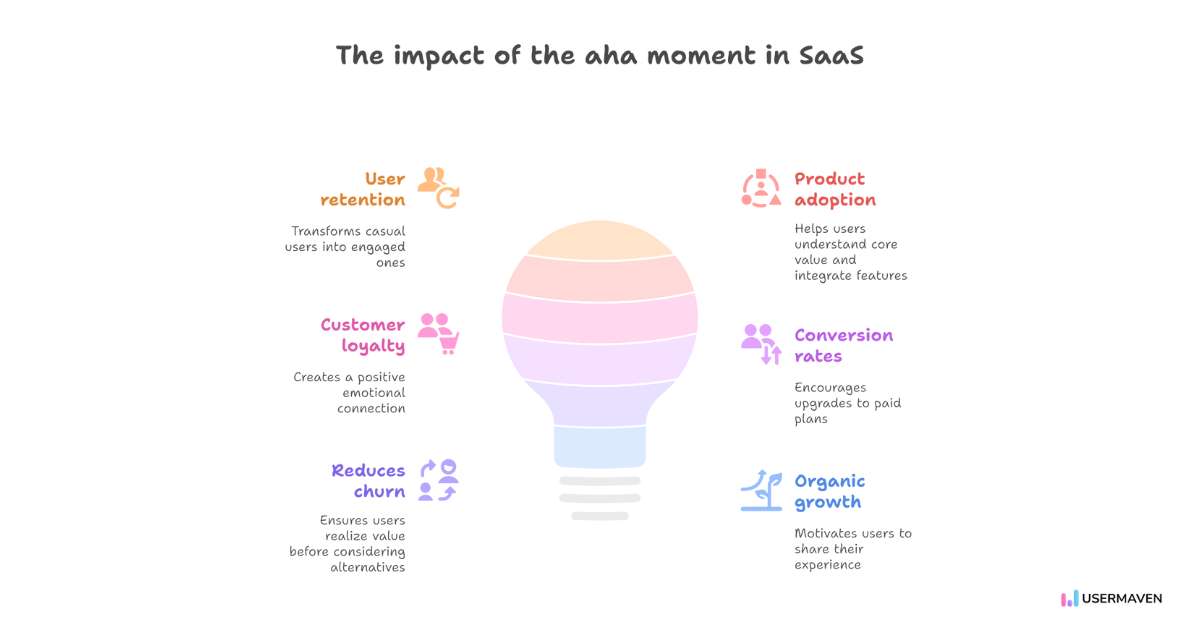
- Boosts user retention: When users experience that moment of clarity, they’re more likely to stick around. It transforms casual users into engaged ones.
- Enhances product adoption: A clear aha moment helps users understand the core value of your product, leading them to explore more features and integrate it into their daily routines.
- Drives customer loyalty: Experiencing the aha moment creates a positive emotional connection, making users more likely to continue using and recommending your product.
- Increases conversion rates: When users see the value early on, they’re more inclined to upgrade to paid plans, boosting your revenue.
- Reduces churn: Identifying and optimizing the aha moment ensures users realize your product’s value before considering alternatives.
- Encourages organic growth and word-of-mouth: A memorable aha moment motivates users to share their experience, driving organic growth and spreading the word.
Real-world examples of aha moments in SaaS
Want to understand how top SaaS brands create those lightbulb moments for their users? Here’s a breakdown of how they guide their users to clarity.
Canva: Unlocking the power of design
Canva’s aha moment is realized when a user, who may have no design experience, creates their first stunning design effortlessly. With its simple drag-and-drop interface and a massive library of templates, Canva removes the intimidation of design.
The moment a user sees their first polished creation, it clicks; design is no longer a barrier, it’s an accessible tool. This instant realization builds confidence and drives long-term engagement.
Loom: Communicating through video
Loom’s aha moment happens when users record and share their first personalized video message. The lightbulb moment comes when users realize how much more effective and personal video is compared to text-based communication.
By simplifying video creation and sharing, Loom demonstrates to users that they can communicate more clearly and efficiently, thereby reducing the need for endless back-and-forth emails or meetings. It’s this ease and impact that has fueled Loom’s rapid adoption in remote and hybrid teams.
Calendly: Scheduling without the hassle
Calendly’s aha moment occurs when users experience the ease of scheduling meetings without the back-and-forth emails. It’s the moment when users realize they no longer need to coordinate times manually; Calendly syncs with their calendar and offers real-time availability.
This simple yet powerful feature transforms scheduling from a frustrating chore to a smooth and effortless task.
How to identify your product’s aha moments
Identifying your product’s aha Moment is more than just a fun discovery; it’s a key to unlocking user engagement, retention, and product adoption. These moments are when users finally “get it” and see the true value of what you’re offering.
So, how can you spot these critical moments? Let’s break it down.
1. Analyze product usage data
The first step is diving into your product’s event data. This means examining how users interact with your product and paying attention to the key actions that drive progress on your KPIs, such as retention and conversion.
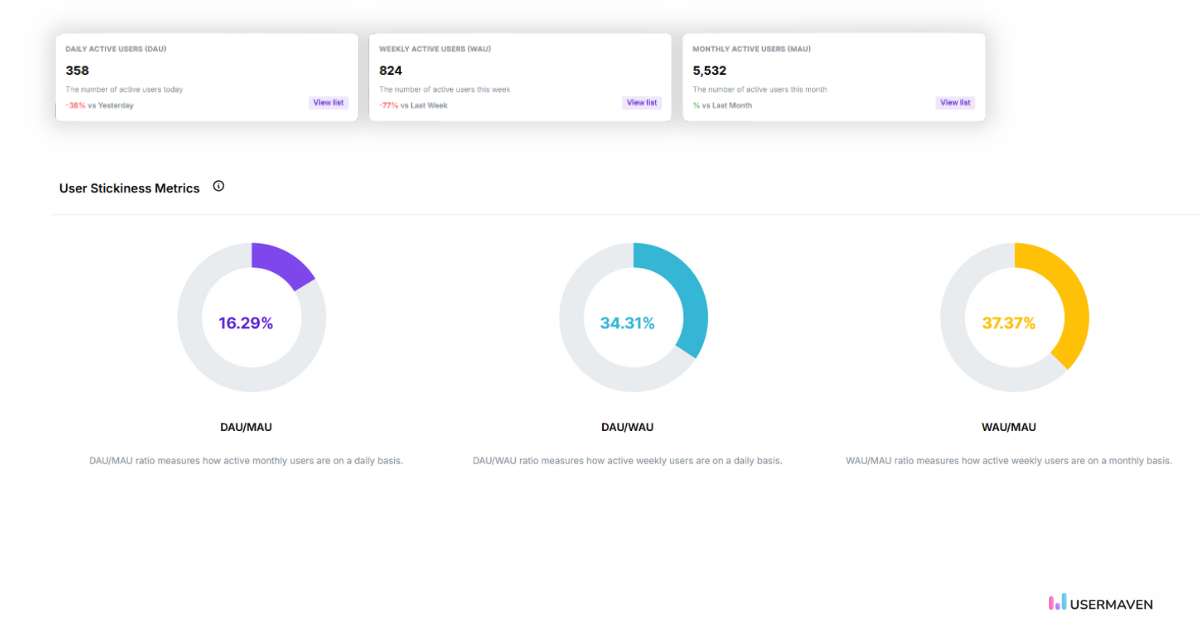
This is where product usage analytics comes in: you want to identify the behaviors that show users are genuinely engaging and finding value in your product. With proper event tracking in place, you can see exactly when users experience that shift; the moment when everything falls into place.
These actions are often your aha moments. By analyzing this data, you’ll pinpoint which features or actions are driving long-term engagement and helping users realize the product’s full value.
2. Funnel analysis: Track the user journey
Next, we’ve got funnel analysis. Think of this as your roadmap for the customer journey.
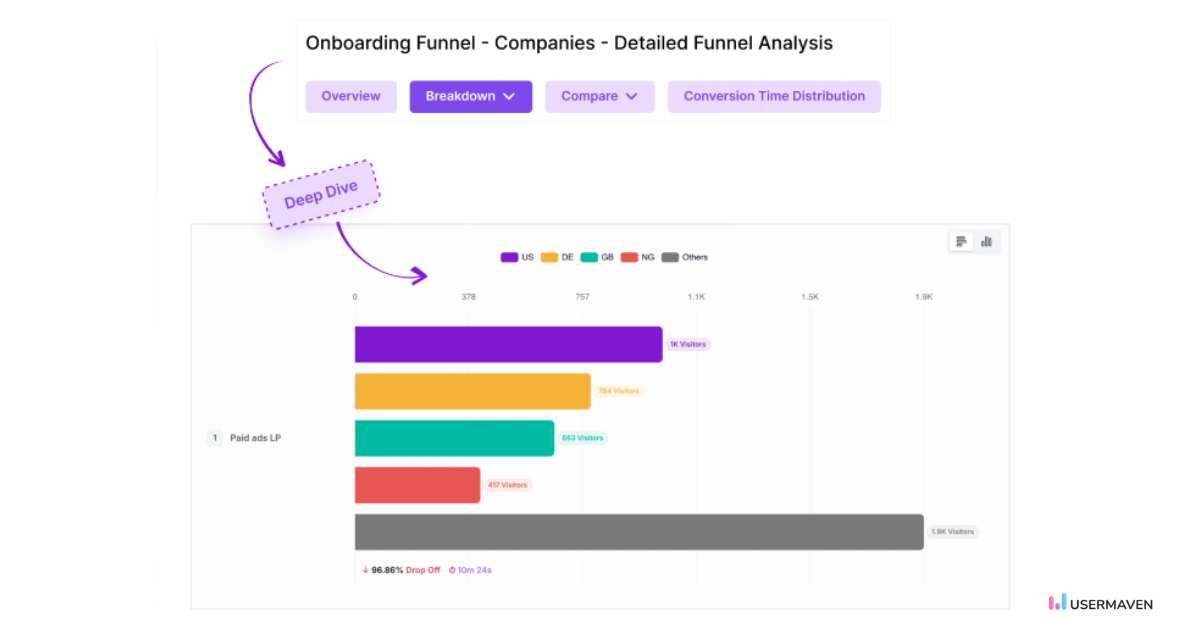
By observing how users progress through different stages, you can identify where they begin to engage deeply and, even more importantly, when they reach their aha moment.
But it’s not just about the moments where things go right; it’s also about the drop-off points. Where do users start to lose interest? Where do they abandon the process? Drop-off points are often a sign that users haven’t yet experienced that breakthrough insight.
Maybe they didn’t fully understand the value of a particular feature, or they didn’t see how it solved their problem. By identifying and addressing these drop-off points, you can refine the user experience to guide users more smoothly to their aha moment.
3. Segment your users for deeper insights
Your customer base isn’t one-size-fits-all, and neither are their aha moments. Segment your users based on factors like role, behavior, or frequency of use. For example, new users may experience their Aha Moment more quickly when they see immediate benefits, while more advanced users may discover it after using a more complex feature.
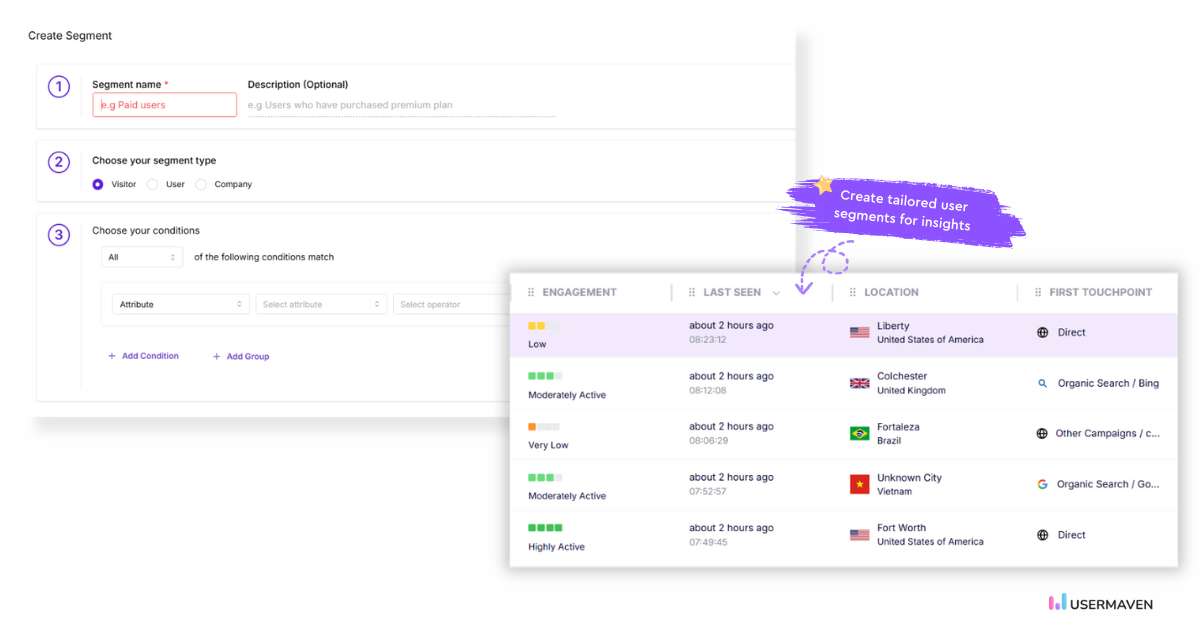
By tailoring your approach based on user segments, you’re giving each group a higher chance of reaching their breakthrough moment. This personalization makes it easier to guide users in the right direction, leading them to thoroughly appreciate what your product can do.
4. Gather targeted user feedback
User feedback is a goldmine for identifying aha moments. Instead of just asking broad questions, focus on specific groups of users at different stages of their journey. What made the product click for new users? What helped power users reach their aha moment?

Use in-app surveys or feedback prompts immediately after users reach key milestones to capture real-time insights. This helps you understand what resonates with users and allows you to refine the experience, enabling more users to reach that moment of clarity.
5. Dive into retention data with cohort analysis
Retention is one of the best indicators of a successful aha moment. Cohort analysis helps you understand which user behaviors lead to long-term engagement.
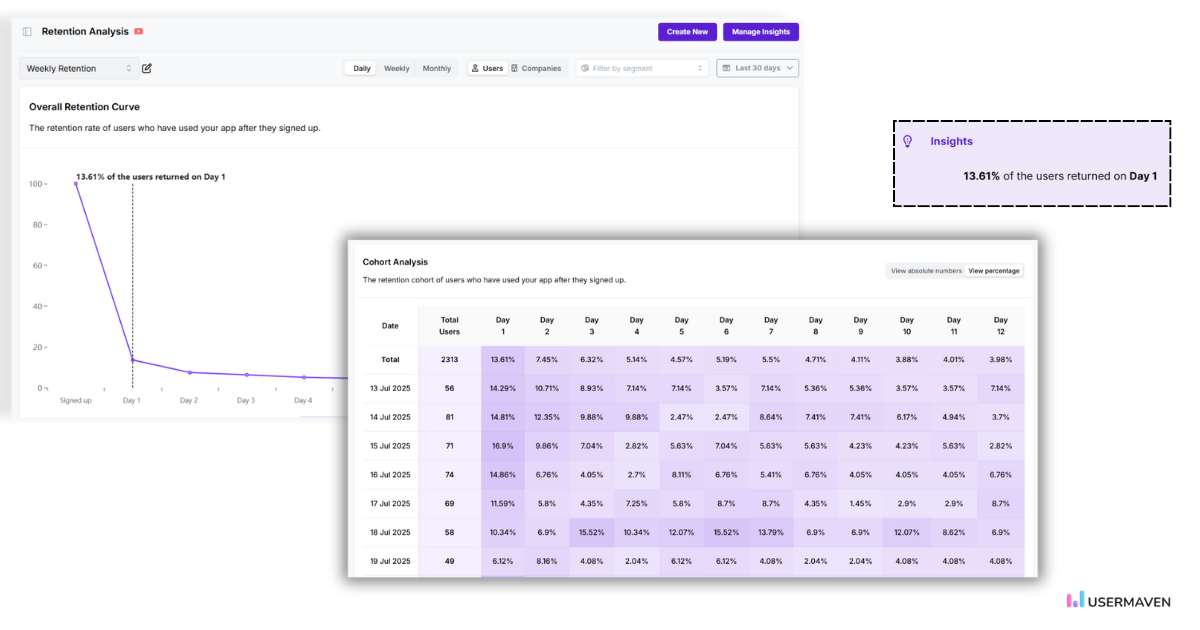
For instance, you might discover that users who interact with a particular feature early on are more likely to stick around. By analyzing retention data across different cohorts, you can uncover the aha moments that drive sustained product usage, allowing you to optimize the experience for improved user retention.
6. Dashboards: Visualize and optimize aha moments
Lastly, dashboards are incredibly useful for visualizing how users are interacting with your product. By monitoring key metrics such as retention, feature adoption, and overall engagement, you can easily identify patterns that indicate when users are experiencing their ‘aha’ moments.
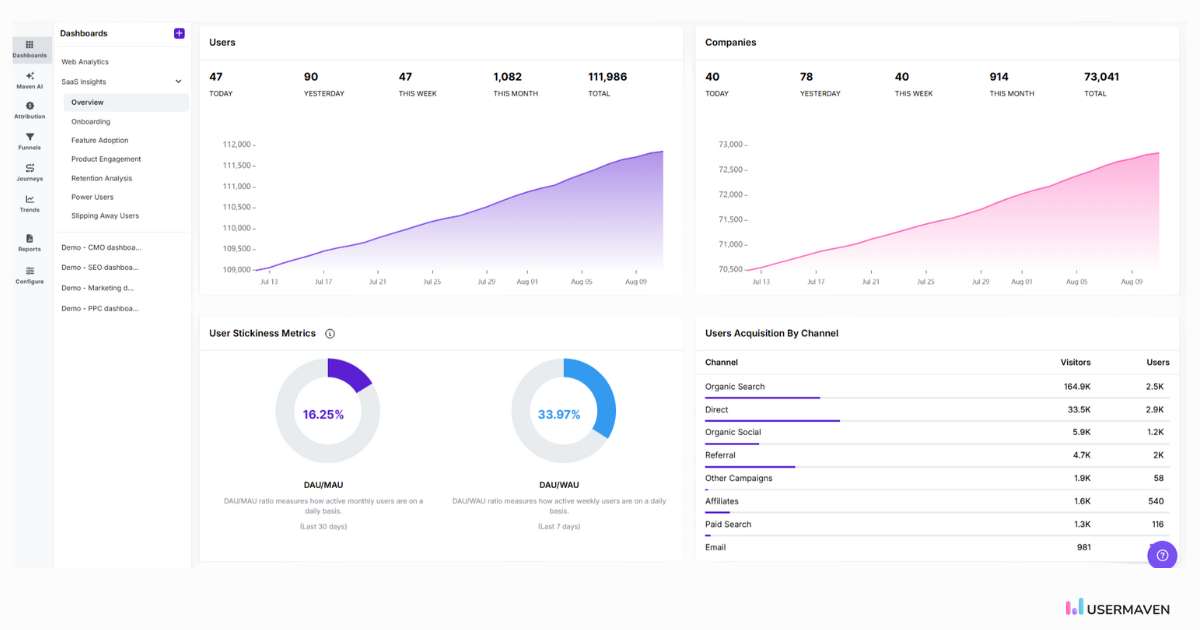
Dashboards help you track the progress of these moments in real-time, ensuring you can continuously refine the experience and make sure users are getting the most value from your product.
How to guide users to their aha moment
You’ve identified your product’s aha moment, now it’s time to ensure users reach it. The journey to this breakthrough is crucial, and it’s up to you to guide them in a seamless, intuitive way.
Here’s how you can make sure users have the best possible chance of discovering the value your product offers.
1. Personalize the user journey
Every user is unique, and their path to discovering the value of your product should be too. Personalizing the journey is key to guiding them to their aha moment faster. Four-fifths of consumers worldwide are comfortable with personalized experiences and expect companies to offer them, highlighting how important it is to create tailored experiences. By segmenting users based on key factors such as demographics, roles, behavior, and usage patterns, you can ensure that each group experiences the product in a way that resonates with them.

For example, new users may benefit from a guided walkthrough of core features, while power users may prefer to dive straight into more advanced functionalities. Analyzing feature usage within these segments can give you deeper insights into how different groups interact with your product. With segmentation analysis, you can better understand how each cohort engages with specific features, allowing you to fine-tune their experience and guide them more effectively to their aha moment.
2. Reduce friction points in the user experience
Friction tends to be a massive barrier to users reaching their aha moment. Whether it’s a lengthy sign-up process, unclear navigation, or too many steps to complete a task, friction slows down a user’s journey and can even cause them to abandon the product altogether.
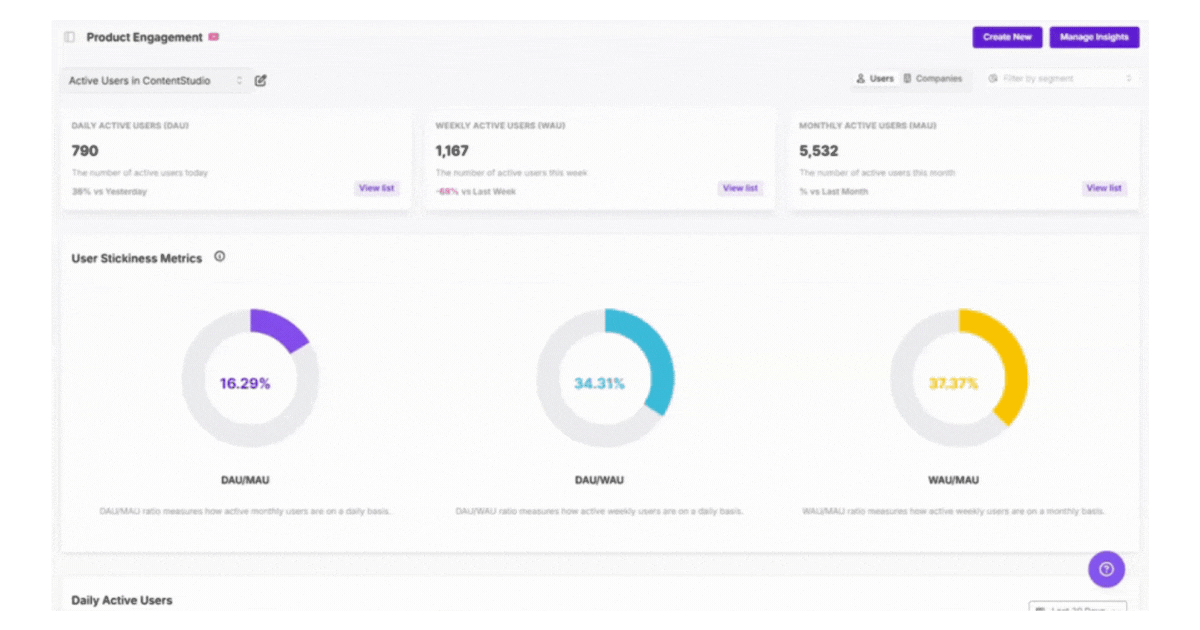
To avoid this, aim to remove unnecessary obstacles as early as possible. For instance, avoid asking users for excessive information while they are in the middle of their flow. Let them experience the value of your product first, and request additional details later, once they’ve seen what your product can do.
By analyzing product adoption metrics, you can track where users engage most and identify areas where they might face friction. Using these insights from your product analytics strategy, you can remove barriers and optimize the user journey, making it easier for users to experience that breakthrough moment of value.
3. Create an intuitive onboarding experience
First impressions are everything, especially when it comes to onboarding. For new users, onboarding is their first taste of what your product can do, so it’s crucial to make it easy and intuitive.

Help them experience their aha moment as quickly as possible by introducing them to the core features that deliver immediate value. Interactive walkthroughs, onboarding checklists, and product tours are excellent tools for guiding users through key features and actions.
For more complex platforms, use funnels to identify where users tend to drop off or get confused. Refine these stages to help guide users more effectively toward their aha moment. By keeping onboarding goal-oriented and straightforward, users can experience value sooner, which increases the chances of long-term engagement.
4. Reinforce aha moments throughout the user lifecycle
The first aha moment is essential, but it’s not always enough, especially for complex products. Users often require repeated exposure to the product’s value to maintain their engagement.
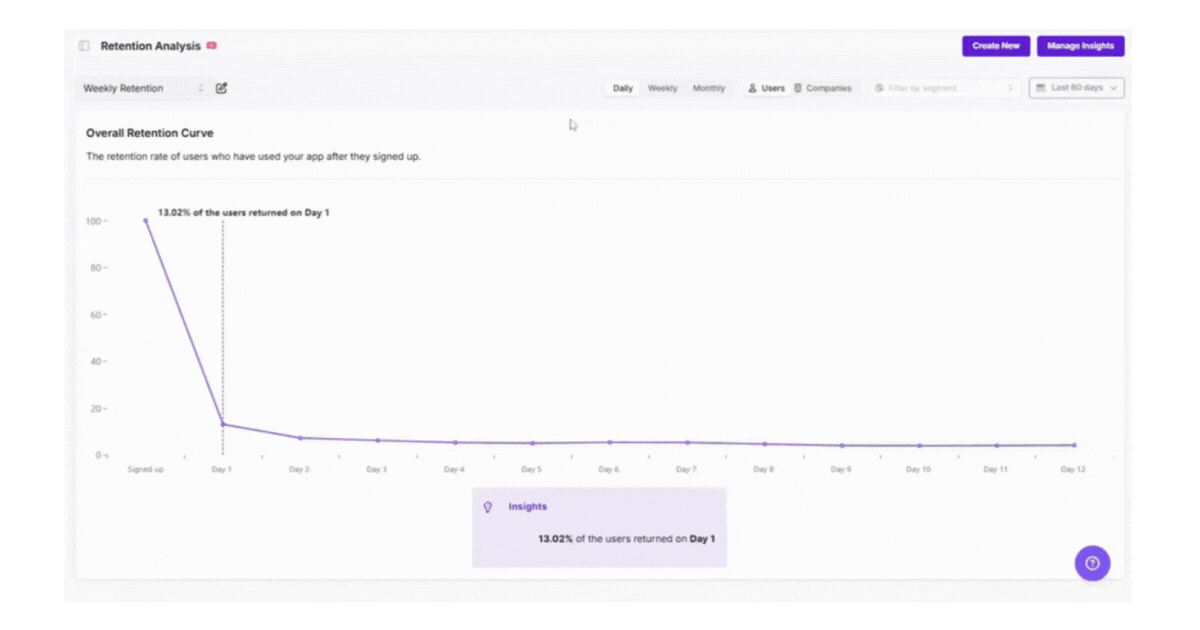
Creating a series of multiple aha moments throughout the user lifecycle can keep users coming back for more. Gradually introduce them to advanced features or deeper functionality as they become more comfortable with the product.
With the right analytics in place, like product launch analytics or retention cohort data, you can track these moments and understand which features continue to provide value as the user’s journey evolves.
5. Use ongoing support to guide users
Even after onboarding, continuous support is crucial to helping users reach their aha moment. Offer in-app guidance or interactive tutorials that help users overcome minor hurdles as they explore new features. Providing real-time support through chat or FAQs also makes it easier for users to feel confident in their journey.
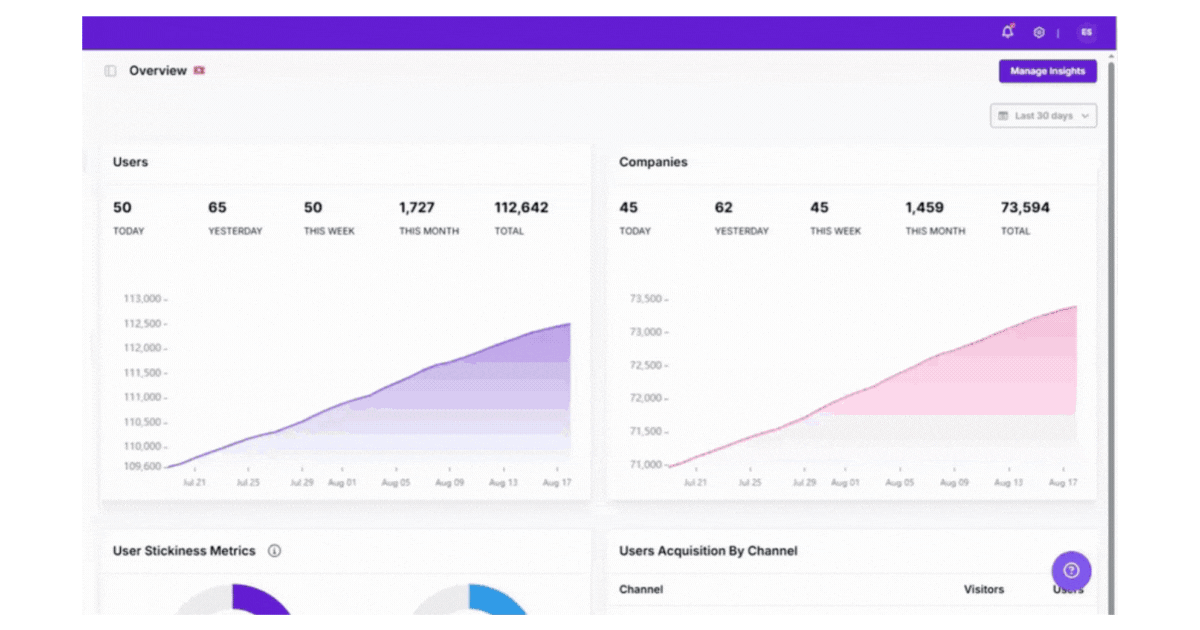
Proactive support ensures that users aren’t left feeling lost, which keeps their engagement high. Whether it’s a question about advanced features or troubleshooting, being there for them strengthens their understanding and keeps them on track toward deeper product engagement.
Common pitfalls to avoid on the road to the aha moment
Guiding users to that pivotal aha moment is crucial, but several common missteps can hinder their journey. Here’s what to watch out for:
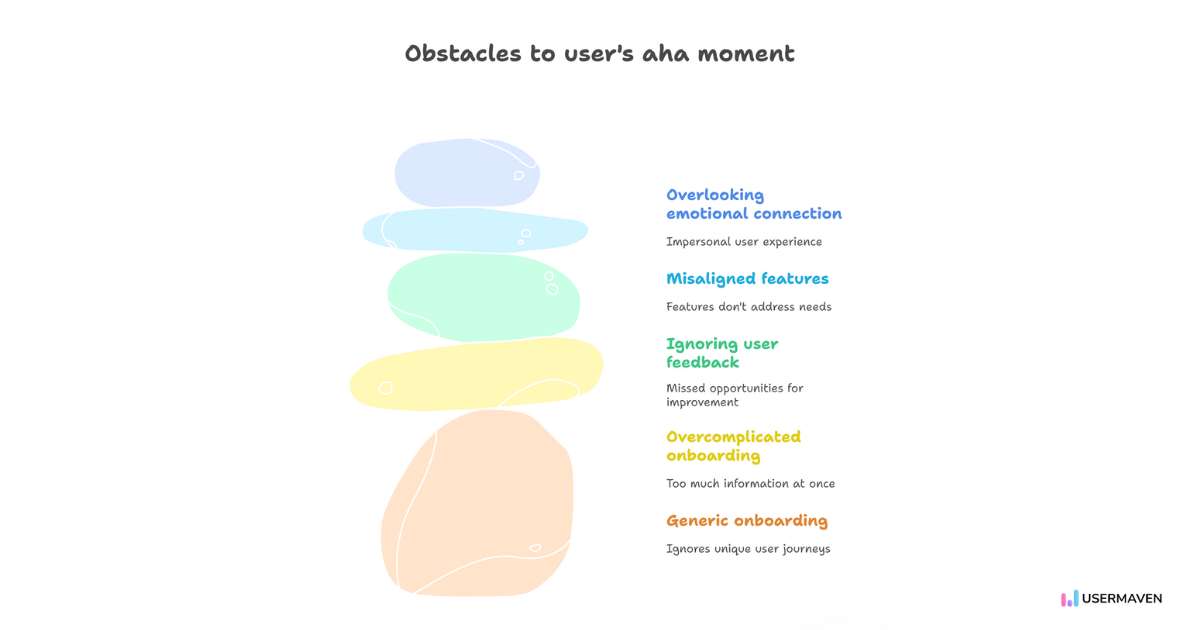
- Assuming one-size-fits-all: Believing that all users will experience the aha moment in the same way can lead to a generic onboarding process. Leverage customer journey maps and actionable analytics to recognize unique paths to the aha moment, and tailor onboarding accordingly.
- Overcomplicating onboarding: Bombarding users with too much information or too many features at once can overwhelm them. Keep the onboarding process simple and focused on the core value of your product.
- Neglecting user feedback: Ignoring user behavior and feedback can lead to missed opportunities for improvement. Regularly analyze user interactions and gather feedback to refine the user experience.
- Misaligning features with user needs: Introducing features that don’t address specific user pain points can confuse users and delay their aha moment. Ensure your features align with user needs by segmenting your audience and tailoring features to each group for a more personalized experience.
- Overlooking emotional connection: Relying too much on functionality without considering the emotional side of the experience can feel impersonal. Use customer journey maps and segmentation insights to design moments that resonate emotionally, fostering deeper engagement.
Guiding users to their aha moments with Usermaven
Once you’ve identified your product’s aha moment, the next step is selecting the right tool to guide your users directly to it. That’s where Usermaven comes in. With its powerful features and intuitive, no-code interface, Usermaven makes it easy to both identify and optimize the key moments when users truly realize your product’s value.
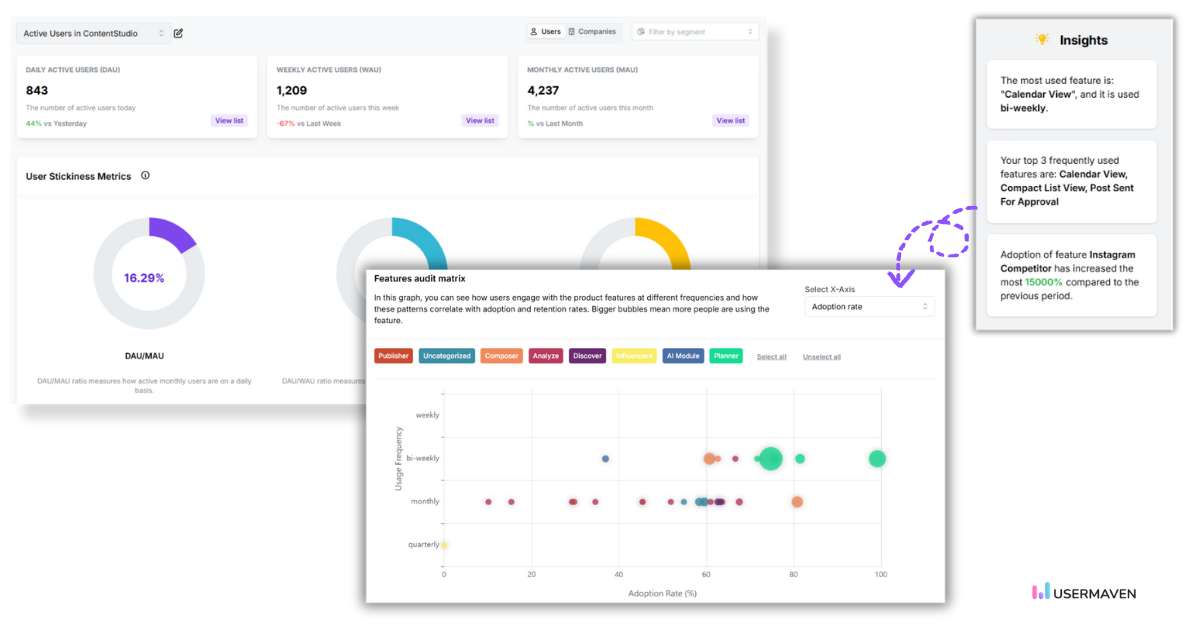
Whether you’re tracking user behaviors, analyzing feature usage, or segmenting audiences, Usermaven provides the tools you need to optimize those pivotal moments.
Here’s how it helps you uncover and guide users to their aha moments:
- Event tracking: Easily track user interactions with your product without needing to write a single line of code. Whether it’s clicks, feature usage, or other necessary actions, you can autocapture these events in real-time, giving you insight into which moments are leading users to connect with your product’s core value.
- Product analytics: Track user behavior, engagement, and feature adoption to understand what’s driving long-term retention. These insights help you pinpoint exactly which actions and features contribute to those key aha moments, allowing you to refine your product to make them happen more consistently.
- User journeys: Map out the entire user journey from start to finish. By visualizing how users interact with your product and the actions they take, you can identify the key touchpoints that lead to an aha moment. Whether they’re using a specific feature or completing a task, you’ll know exactly when they’ve reached a breakthrough and can optimize the experience to guide more users.
- Segments: With Usermaven, you can group users based on behavior, demographics, or usage patterns, helping you identify which segments are most likely to reach their aha moment. This segmentation enables you to tailor the user experience for each group, allowing you to prioritize the most impactful features and accelerate their journey to value.
- Funnels: With funnel analysis, you can visualize the path users take from start to finish. By tracking their progress through different stages of your product, you can easily spot drop-off points: the moments when users get stuck or lose interest. This insight helps you optimize the user flow, reduce friction, and ensure that users stay on track toward their aha moment.
- Flexible dashboards: Usermaven’s dashboards consolidate all your key metrics into a single, easy-to-read view, enabling you to track everything from feature adoption to user retention in real-time. This real-time data enables you to quickly identify which users are engaging with your product and where they may need additional support to reach their ‘aha’ moment.
With Usermaven, you don’t just track clicks; you uncover the moments when users truly “get it.” Whether it’s identifying the exact moment they engage with the features that matter most, or spotting the friction points that slow them down, Usermaven helps you refine the experience so users can reach their aha moment without any roadblocks.
With tools that streamline onboarding, optimize product engagement, and track feature adoption, Usermaven helps guide users to those transformative moments that drive long-term engagement.
It’s all about giving you the insights you need to create a smooth, valuable experience that helps users realize your product’s full potential, right when it counts the most.
Final thoughts
The aha moment is more than just a nice-to-have; it’s the key to unlocking user engagement and long-term product success. It’s that moment when everything clicks, and users suddenly realize how your product fits into their lives. Whether it’s the first time they experience the value or the point at which they become loyal advocates, these moments shape the entire user journey.
For SaaS companies, identifying and facilitating these breakthrough moments should be a top priority. By focusing on what truly matters, delivering value, removing obstacles, and guiding users smoothly, you’re setting the stage for deeper engagement and growth.
Tools like Usermaven can help you track, optimize, and guide users toward these aha moments. With the right insights and data at your fingertips, you can create an experience that resonates and keeps users coming back for more. After all, helping users discover your product’s true potential at the right time is the ultimate way to drive business success.
Power up your SaaS
with perfect product analytics
*No credit card required
FAQs about aha moments
1. What is an aha moment in product usage?
An aha moment is that breakthrough moment when users realize the true value of your product. It’s when they go from being uncertain or confused to fully understanding how your product solves their problem. This moment is crucial for driving user engagement and long-term retention, as it helps users understand the benefits of continuing to use your product.
2. What is a synonym for aha moment?
An aha moment is often referred to as a “eureka moment,” “lightbulb moment,” or “moment of discovery.” These terms all describe that instant when a user gains a sudden realization or understanding of your product’s value, leading to a breakthrough in their experience.
3. Can aha moments be repeated throughout the user lifecycle?
Absolutely! In many cases, the aha moment doesn’t happen just once. As users become more familiar with your product, they can experience multiple aha moments when discovering new features or deeper functionality. By understanding the user journey and optimizing it at each stage, you can reinforce these moments and maintain long-term engagement.
4. How can I guide my users to their aha moment?
Guiding users to their aha moment starts with understanding their needs and personalizing their journey. Streamlining onboarding, offering helpful in-app guidance, and focusing on the features that deliver the most value can speed up the process. Tools like Usermaven can help track user behavior and identify friction points, allowing you to fine-tune the experience and ensure users reach their aha moment as smoothly as possible.
Try for free
Grow your business faster with:
- AI-powered analytics & attribution
- No-code event tracking
- Privacy-friendly setup


